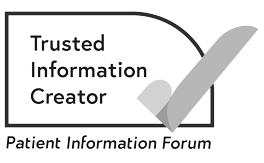Acupuncture
During acupuncture, the therapist places fine sterile needles just below the skin at certain points on the body. Acupuncture may reduce symptoms such as sickness or hot flushes.
What is acupuncture?
Acupuncture is the practice of inserting very fine needles into the body at particular points called acupoints. These are then left for a while before being removed.
Acupuncture is thought to have been used in China for about 2,000 years. The traditional thinking is that everyone has a special type of energy (chi or qi) that flows through pathways in the body. These pathways are called meridians or channels. Traditional acupuncturists believe that inserting needles at specific points along these pathways rebalances this flow of energy and improves health and wellness.
It is now used widely as Western medical acupuncture. This approach believes that inserting needles through the skin and into muscle stimulates nerves. This results in the release of chemicals such as endorphins. These act as natural painkillers and give a feeling of well-being.
You can read more about acupuncture and find an acupuncturist on these websites:
What are the possible benefits of acupuncture for people with cancer?
Acupuncture can be used to help manage some symptoms and side effects of cancer treatments. It is available in many NHS hospitals, pain clinics and hospices. Some cancer doctors and nurses are trained in acupuncture.
Acupuncture may be used to help with different symptoms. Studies have shown acupuncture may help to:
- reduce nausea in people who have had chemotherapy
- improve sleep
- relieve pain
- relieve hot flushes.
Your doctor or acupuncturist can talk to you about what research has been done and whether acupuncture may help in your situation.
Is it safe to have acupuncture if I have cancer?
Acupuncture is generally thought to be a safe treatment when it is performed by a qualified professional. Side effects are very rare. But they can be serious if the needles are used incorrectly or inserted too deep.
It is important to check the acupuncturist has experience in treating people with cancer.
If you are having treatment that could affect your blood count, you should check with your doctor before having acupuncture. Some cancer treatments such as chemotherapy can reduce the number of white blood cells in your blood. This can increase your risk of infection.
You should also avoid acupuncture if you have a very low number of platelets (blood cells that help blood to clot) or you bruise easily. These can increase your risk of bleeding.
If you have had lymph nodes removed as part of cancer treatment, this can cause swelling in the area close by. For example, you might have swelling in your arm after breast cancer surgery. This is called lymphoedema. If you have, or are at risk of, lymphoedema, avoid acupuncture in that part of your body.
About our information
This information has been written, revised and edited by Macmillan Cancer Support’s Cancer Information Development team. It has been reviewed by expert medical and health professionals and people living with cancer.
-
References
Below is a sample of the sources used in our complementary therapies information. If you would like more information about the sources we use, please contact us at informationproductionteam@macmillan.org.uk
Balneaves LG, Watling CZ, Hayward EN, Ross B, Taylor-Brown J, Porcino A, Truant TLO. Addressing Complementary and Alternative Medicine Use Among Individuals With Cancer: An Integrative Review and Clinical Practice Guideline. J Natl Cancer Inst. 2022 Jan 11;114(1):25-37. Available from: doi: 10.1093/jnci/djab048. PMID: 33769512; PMCID: PMC8755493. [Accessed September 2023].
Integrative Medicine [Internet]. Memorial Sloan Kettering Cancer Center. 2020. Available from: www.mskcc.org/cancer-care/diagnosis-treatment/symptom-management/integrative-medicine [accessed September 2023].
NICE. Guidance on Cancer Services Improving Supportive and Palliative Care for Adults with Cancer. The Manual National Institute for Clinical Excellence [Internet]. 2019. Available from: www.nice.org.uk/guidance/csg4/resources/improving-supportive-and-palliative-care-for-adults-with-cancer-pdf-773375005 [accessed September 2023].
Overview of complementary, alternative, and integrative medicine practices in oncology care, and potential risks and harm. UpToDate. Available from: www.uptodate.com/contents/overview-of-complementary-alternative-and-integrative-medicine-practices-in-oncology-care-and-potential-risks-and-harm?source=mostViewed_widget [accessed September 2023].
Date reviewed

Our cancer information meets the PIF TICK quality mark.
This means it is easy to use, up-to-date and based on the latest evidence. Learn more about how we produce our information.
The language we use
We want everyone affected by cancer to feel our information is written for them.
We want our information to be as clear as possible. To do this, we try to:
- use plain English
- explain medical words
- use short sentences
- use illustrations to explain text
- structure the information clearly
- make sure important points are clear.
We use gender-inclusive language and talk to our readers as ‘you’ so that everyone feels included. Where clinically necessary we use the terms ‘men’ and ‘women’ or ‘male’ and ‘female’. For example, we do so when talking about parts of the body or mentioning statistics or research about who is affected.
You can read more about how we produce our information here.



